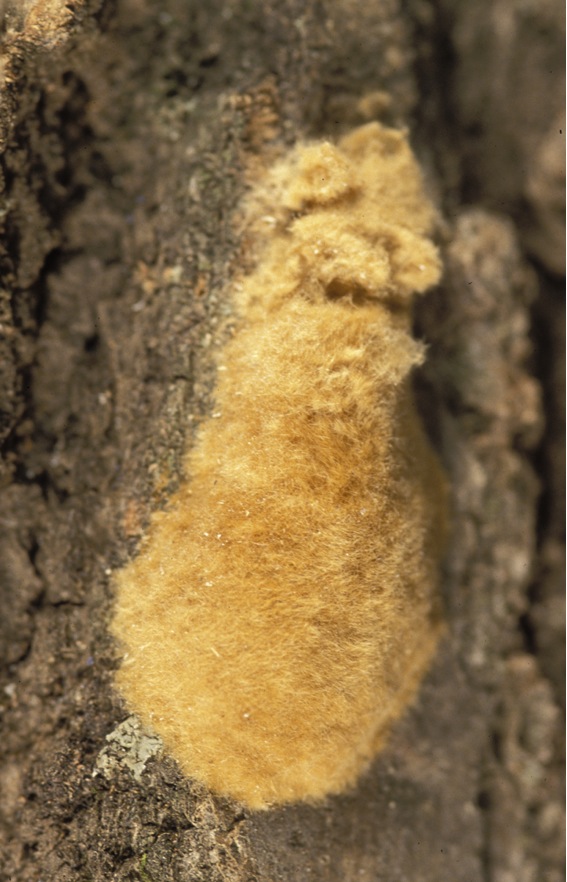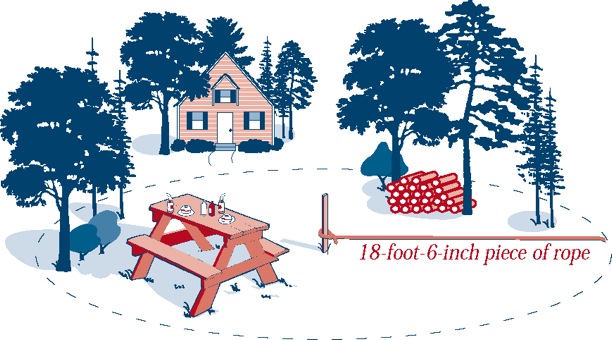
You can predict next year’s potential level of defoliation by spongy moth (Lymantria dispar) caterpillars by estimating the number of egg masses on your property. The best time to conduct a survey is after leaves have fallen.
To conduct a survey you will need:
- an 18-foot, 6-inch length of string attached to a stake
- binoculars
- a note pad and pencil
- a map of the area
- Select a patch of trees that is typical of the area you are concerned about.
- Set the stake and use the string to describe a circle with a radius of 18-foot, 6-inch.
- Search the circle for all egg masses. Use the binoculars to look for egg masses high on the trees, especially the undersides of larger branches. Also check all items on the ground such as picnic tables and woodpiles.
- Write down the number of egg masses and the location of the survey circle.
- Move at least 150 feet away from your first circle and take another survey. Space out your survey circles throughout the area you are concerned about.
- Calculate the average number of egg masses you found in each of your survey circles. An average of greater than 13 egg masses in a residential area or 25 in a woodlot or forest indicates a high likelihood of spongy moth caterpillars causing defoliation in this area. Examine your map to see if there is any pattern to the number of egg masses found. If the number of egg masses increases in one direction, you may want to take more surveys in that direction to determine the extent of the land that could be damaged by spongy moth next year.




